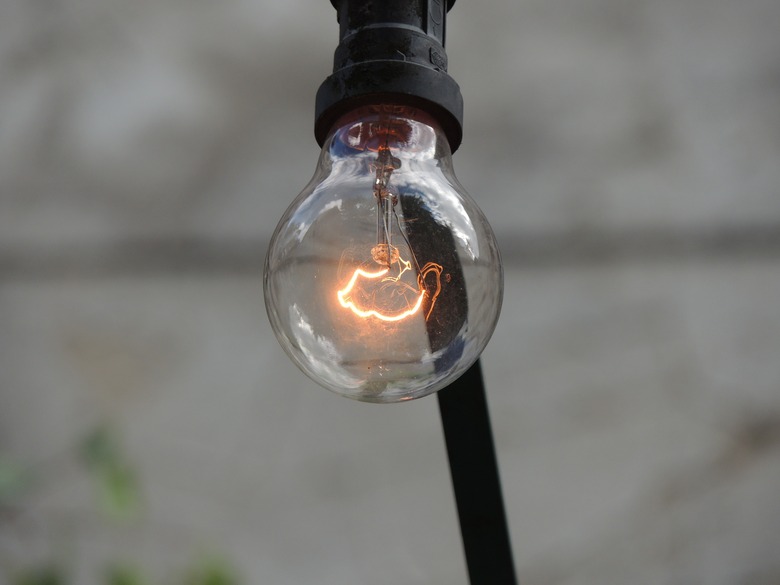The Advantages Of Incandescent Light Bulbs
The light bulb has a history that spans nearly 150 years, and until fairly recently, the incandescent bulb was the only type available. Contemporary bulbs, such as the compact fluorescent (CFL) and light-emitting diode (LED) — which have been on the scene only since the early 1990s — can provide as much light as an incandescent while consuming as little as 80 percent less electricity. Congress passed a law in 2007 prohibiting the manufacture of 40- and 60-watt incandescent bulbs in the United States, but despite efforts to phase them out, incandescents are still widely available. There must be a reason why people still use them, and in fact, there are several.
Types of Incandescent Bulbs
Types of Incandescent Bulbs
Modern incandescents aren't much different than the bulbs marketed by Thomas Edison, who is usually given credit for inventing them, although it's probably more accurate to say he just improved on existing designs. Whereas Edison's bulb had a carbonized bamboo filament enclosed in a vacuum, modern bulbs have tungsten filaments and are usually enclosed in a chamber filled with an inert gas, such as argon or neon.
The U.S. Department of Energy lists three general categories of incandescents:
Standard A-19 Bulbs: Standard-sized bulbs may be pear-shaped or round, and they employ the E-26 screw base used by Edison. In addition, incandescents come in a variety of shapes, sizes and colors for use in such applications as appliance lighting, specialty lamps and Christmas lights.
Halogen Bulbs: Instead of containing an inert gas, the halogen bulb contains a halogen gas composition. This increases the luminance of the filament, but it also produces a large amount of heat.
Reflector Bulbs (Type R): This category includes parabolic aluminized reflector lamps (PAR), used primarily for outdoor spot lighting, and ellipsoid reflector lamps (ER) used for indoor track and recessed lighting.
Why People Still Use Incandescents
Why People Still Use Incandescents
Along with other disadvantages, incandescents — even energy-efficient ones — consume substantially more power than their CFL and LED counterparts. Here are some of the reasons people opt to ignore the energy savings and use incandescent bulbs anyway:
Cost: Incandescents are inexpensive to manufacture and are usually the cheapest option at the hardware store or supermarket. This may not be the case for long, as the cost of LED bulbs continues to drop.
Light Quality: Incandescents offer reliable, even lighting without flickering. Unlike some types of bulbs, such as CFLs and sodium vapor bulbs, incandescents don't have a warmup period and come on at full brightness as soon as you flick the switch.
No Toxic or Dangerous Materials: None of the materials in an incandescent bulb are toxic, making it easier to dispose of used ones. The same isn't true of CFLs, which contain mercury, or sodium lamps, which contain a material (sodium) that can explode when exposed to air.
Dimmable: Modern shoppers can find dimmable CFL and LED bulbs, but they have to check the packaging carefully. By contrast, all incandescent bulbs are dimmable, and because the glow of the filament is highly responsive to the current flowing through it, incandescent bulbs work better on a dimmer switch than any other type of bulb.
More Likely to Fit: Despite the proliferation of incandescent alternatives on the market, manufacturers still haven't made them to fit in all small lamps and other specialty items. Sometimes, an incandescent is your only choice.
The Future of Incandescents
The Future of Incandescents
Congress' ban of incandescent bulbs may not be permanent. Researchers at the Massachusetts Institute of Technology are working on a way to recycle the energy wasted by the filaments, using nanotechnology. If their efforts pay off, incandescents could become as efficient as LEDs or CFLs. Even if that doesn't happen, the chances are good that they will continue to be an option for consumers for the foreseeable future.
